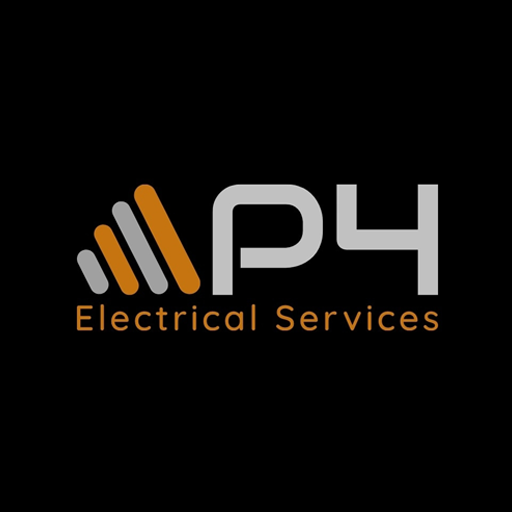Home Automation and Smart Home Integration
Control your home. Simplify your life.
Imagine arriving home and your lights are already on, Your aircon is at the perfect temperature, and your favourite playlist starts playing as you walk through the door. This isn’t science fiction it’s what we deliver every day to homeowners across Brisbane and the Southside through smart home integration.
At P4 Electrical Services, We design and install fully custom home automation systems tailored to the way you live. Whether it’s voice-controlled lighting, remote security, or energy-efficient climate control, we bring smart technology together to make your home safer, more comfortable, and energy efficient.
What is Home Automation?
Home automation is the technology that lets you control various systems and appliances in your home automatically or remotely. That means your lighting, heating, cooling, blinds, irrigation, and even your security system can be controlled through a phone app, smart remote, or voice assistant like
Google Home or Amazon Alexa.
Smart Home Integration goes one step further linking multiple devices and systems so they work together. For example, when you leave the house, a single command can lock the doors, switch off all lights, and activate the alarm system.
Why Smart Home Integration is Growing Fast in Australia
Australians are embracing smart tech, and it’s no surprise why:
Energy bills are rising: Automated lighting, climate control, and appliance management help reduce waste.
Home security is a priority: CCTV, motion sensors, and smart locks keep families safer.
Lifestyle is changing: People want convenience, comfort, and full control from their smartphones.
We’ve worked with a wide range of smart systems, but for Aussie homes, we highly recommend trusted brands like Clipsal Wiser, Fibaro, Philips Hue, and Google Nest, all supported with full warranties and local tech support.
Our Most Popular Home Automation Solutions
At P4 Electrical, we don’t just sell products we deliver full smart home packages that are tailored to your needs. Whether you’re renovating, building a new home, or retrofitting an older house, we’ll make it seamless.
Here’s what we regularly install for homeowners across Brisbane Southside:
1. Smart Lighting Installation
Set the mood or control your lights remotely. Dim, switch, or colour-change lights from your smartphone or schedule them to turn on/off when you're away.
Explore our LED Downlight Installation services
2. Smart Air Conditioning Control
Never come home to a hot house again. Set your aircon to turn on before you arrive, adjust zones with voice control, or automate to switch off when you leave.
Check out our Air Conditioning Installation services
3. Automated Security & Smart CCTV
Get live footage from your phone, two-way intercom access, and notifications when someone approaches your home all while you’re at work or on holiday.
View our Security Camera Installation services
4. Voice-Controlled Assistants
Integrate Alexa, Google Home, or Siri to control lighting, music, appliances, and more all through simple voice commands.
Learn more about our Smart System Integration services
5. Automated Blinds & Curtains
Control your blinds based on time of day, temperature, or even sunrise and sunset. Save energy and maximize comfort.
Discover our Electrical Renovations services
6. Energy Usage Monitoring
See which appliances consume the most power and adjust usage patterns to save money with real-time monitoring tools.
Learn about our Switchboard Upgrade Services
Why Choose P4 Electrical for Smart Home Automation?
We’re not here to upsell flashy tech. We’re licensed electricians with a passion for improving homes with tech that works and keeps working.
10+ years industry experience
Clean, safe, code-compliant installations
Transparent advice no tech jargon
Tailored solutions to your lifestyle and budget
Ongoing support and updates as tech evolves
Our team is always upskilling on the latest smart devices entering the Australian market and we test every system we install ourselves so you know it works before we walk out the door.
How Much Does Home Automation Cost?
The cost of home automation in Brisbane varies based on what you want to automate. Here’s a general guide:
System
Estimated Price (Installed)
Basic Lighting Automation From $650
Full Smart Lighting System: $1,500 – $3,500+
Smart Air Conditioning Controls: From $950
Security Cameras & Sensors: $1,200 – $4,000+
Complete Home Integration: Custom Packages Available
Need a tailored quote? Book a consultation and we’ll walk you through the best setup for your home and budget.
Can You Add Smart Home Features to an Existing House?
Yes. Retrofitting home automation is one of our specialties. Even if your house is decades old, we can often add smart features with minimal rewiring, using WiFi and wireless protocols like Zigbee or Z-Wave.
Areas We Service
We provide home automation and smart home installation across Brisbane Southside, including:
Logan
And surrounding suburbs
Ready to Turn Your House Into a Smart Home?
Your home should work for you not the other way around. At P4 Electrical Services, we help everyday homeowners take control of their lighting, safety, comfort, and power usage with easy to use, future ready smart home systems.
Call us today on 0433 353 945
Or book online for a free consultation.
Let’s bring your home into the future safely, simply, and professionally.
Other Service Links:
Power Point Installation

